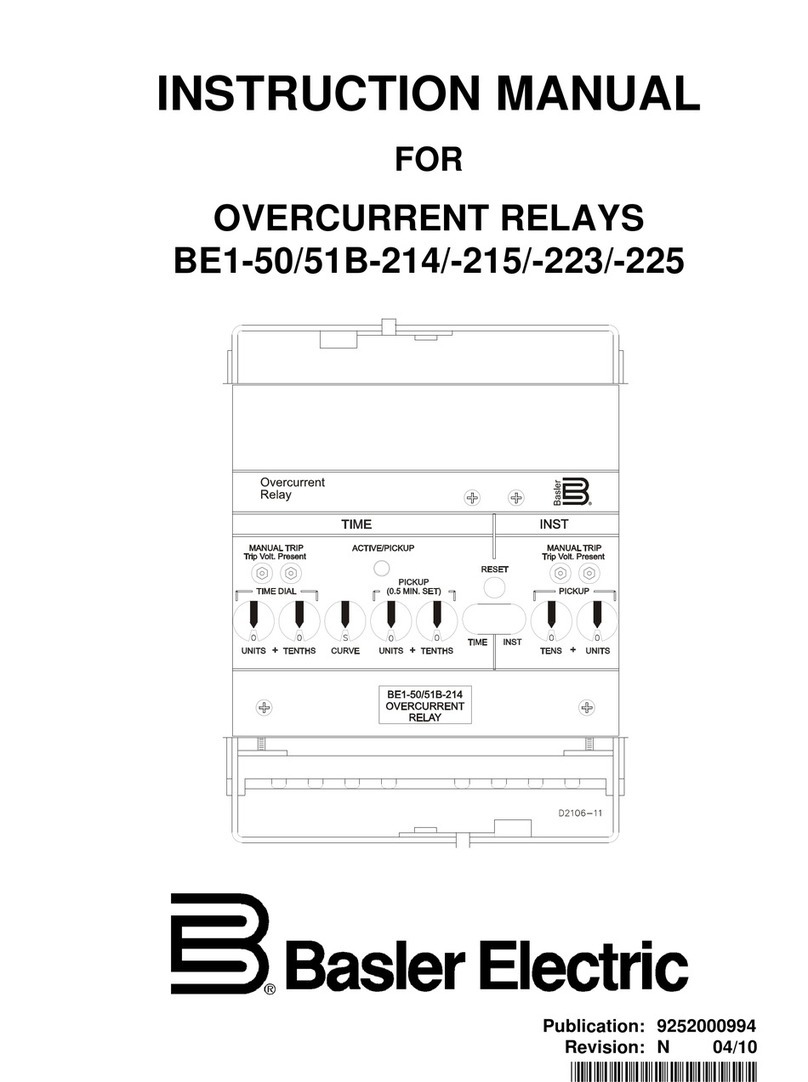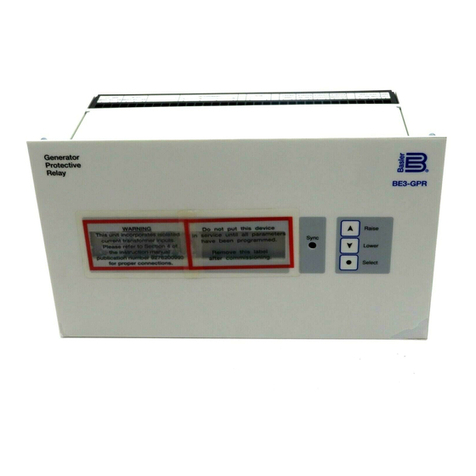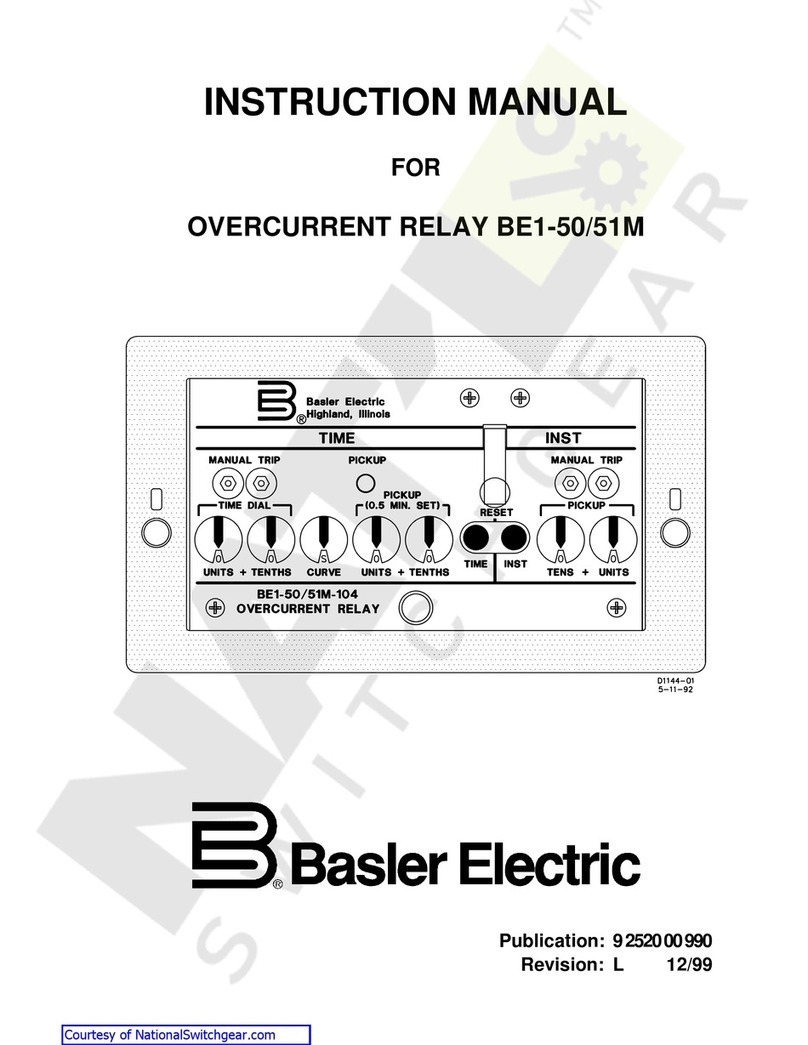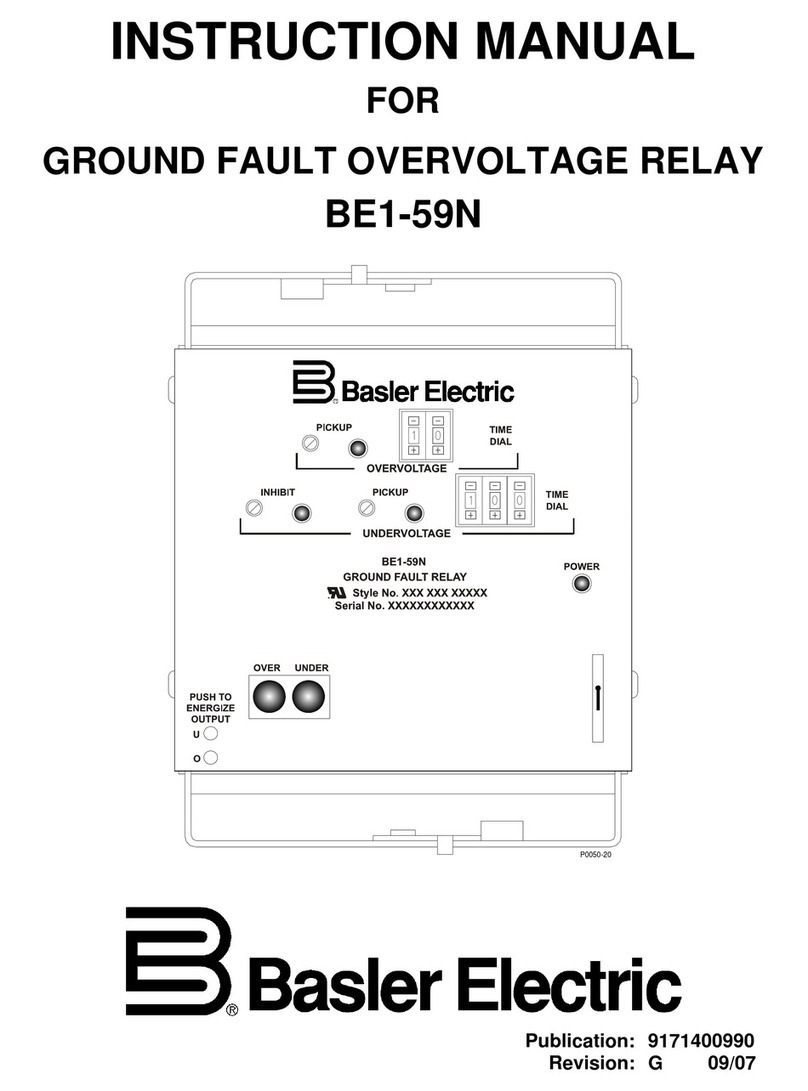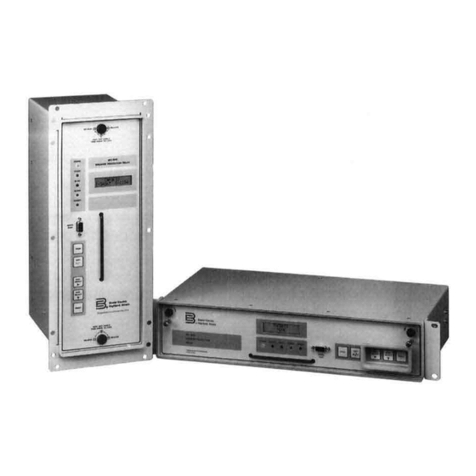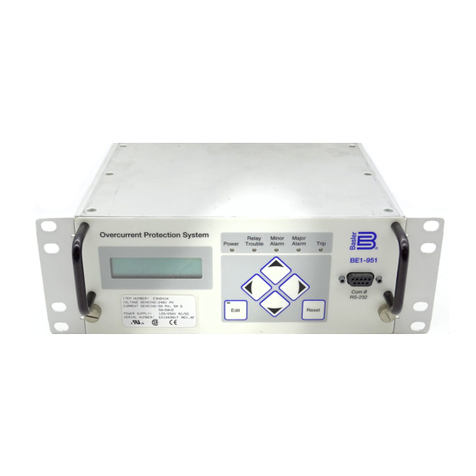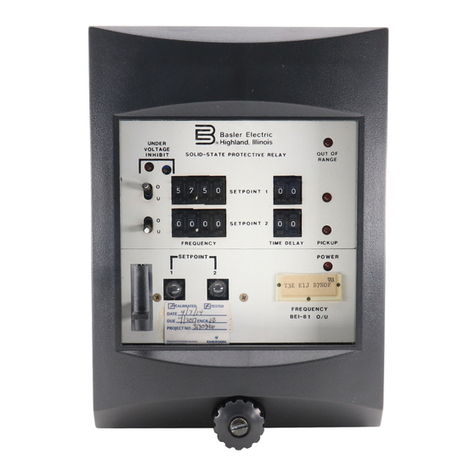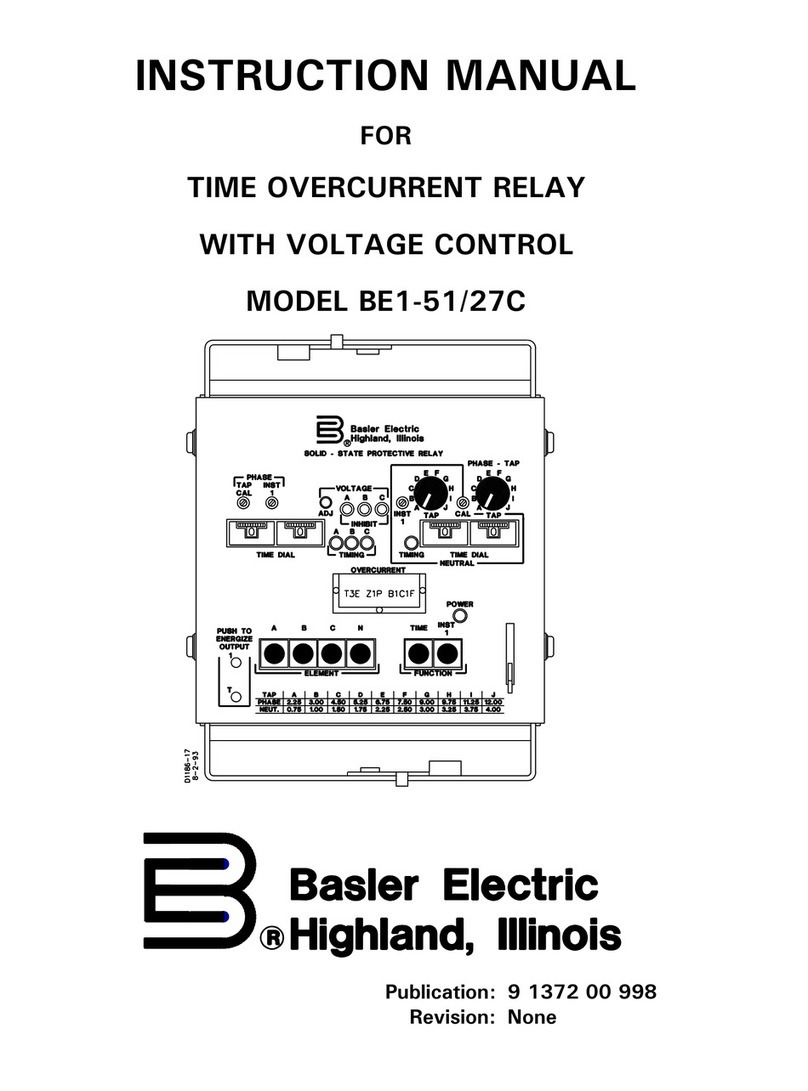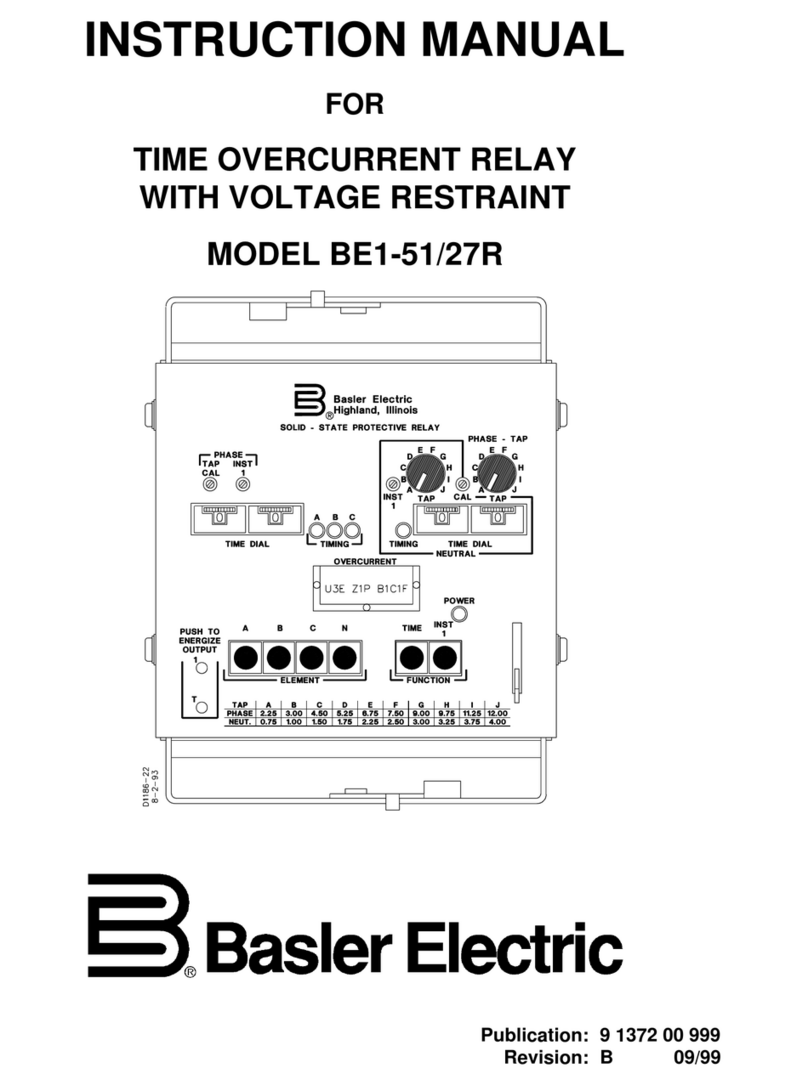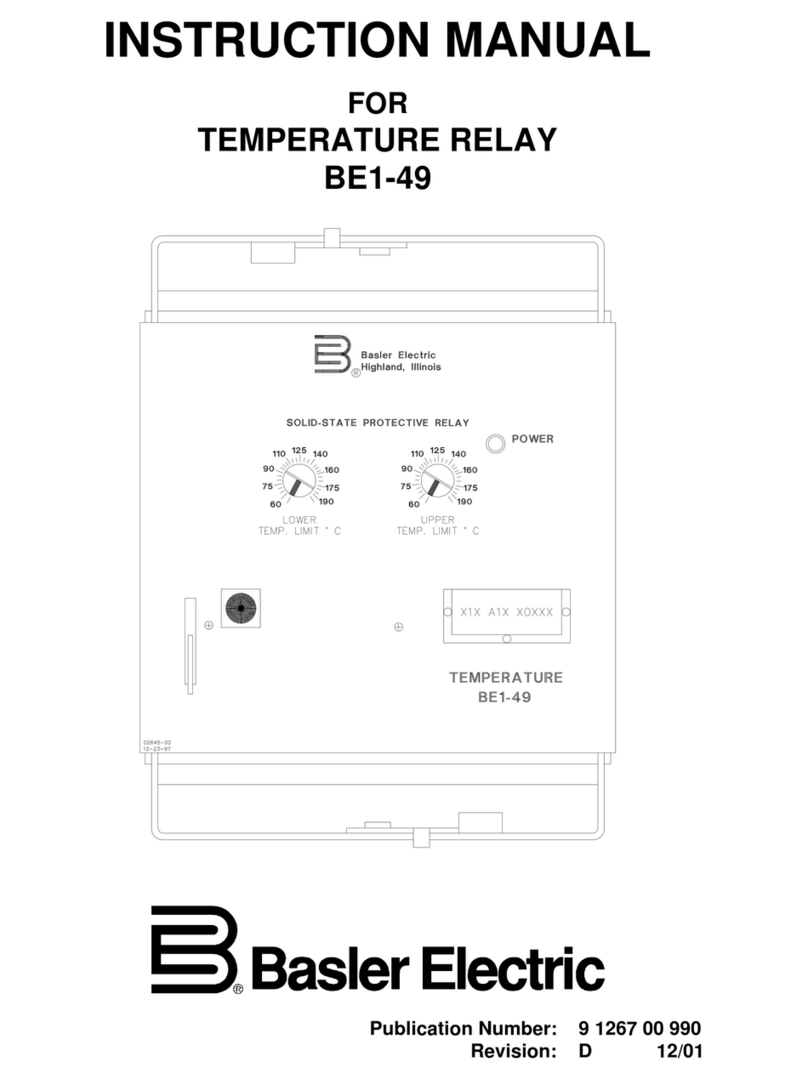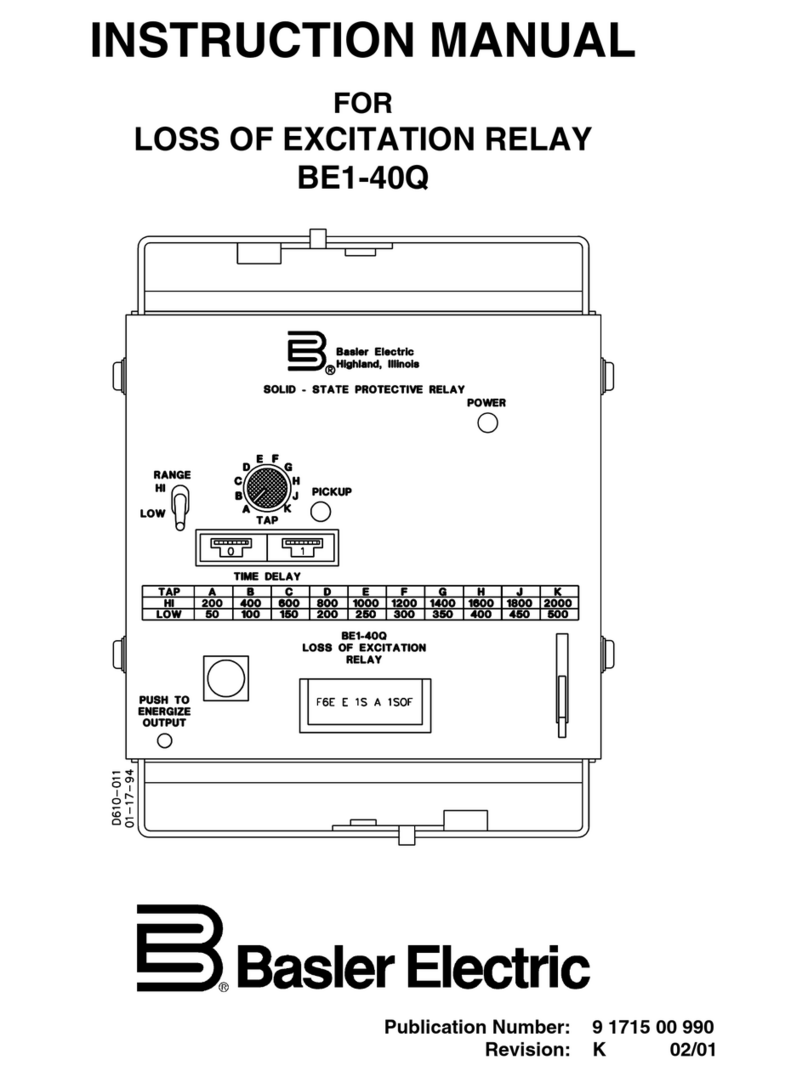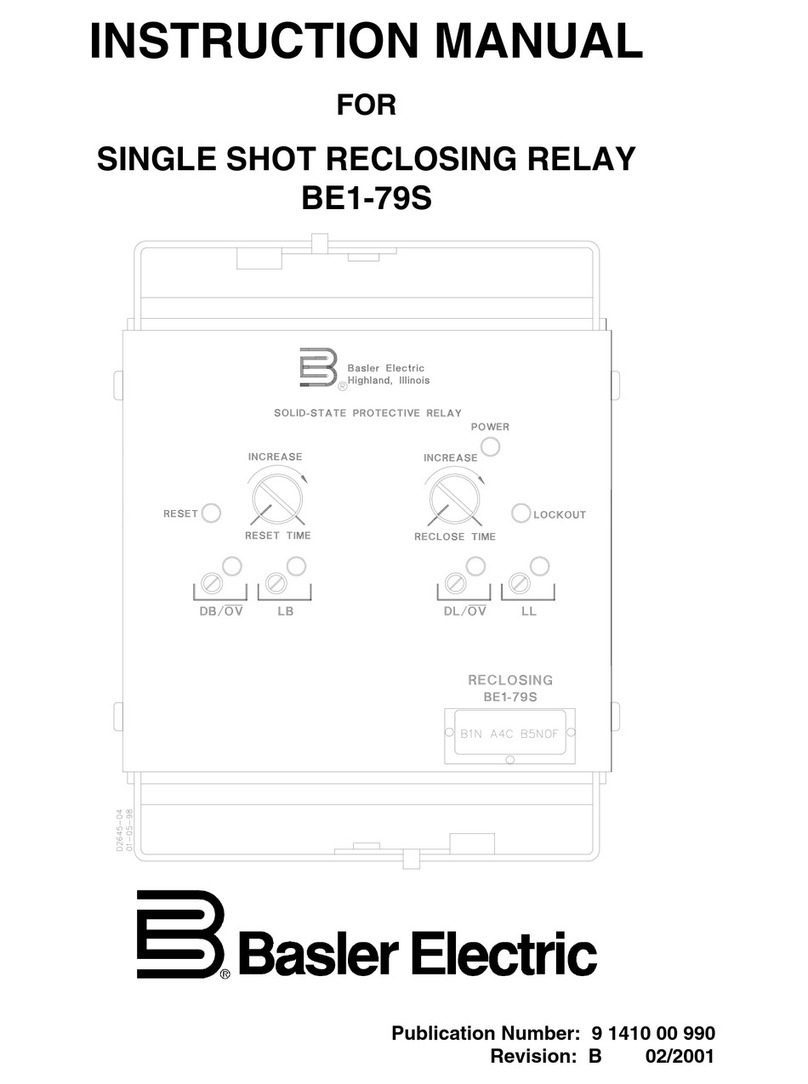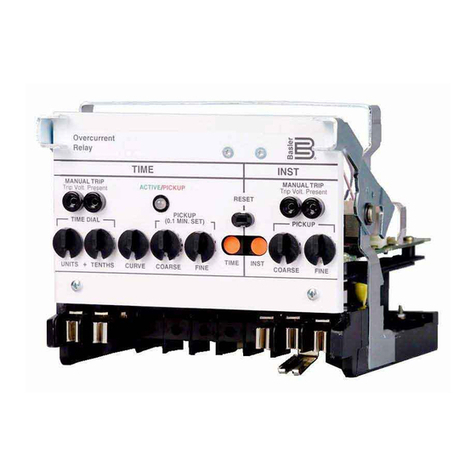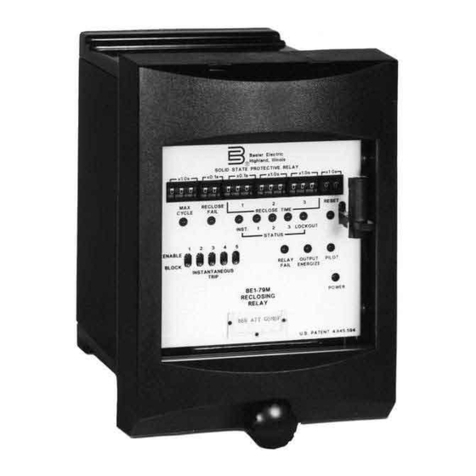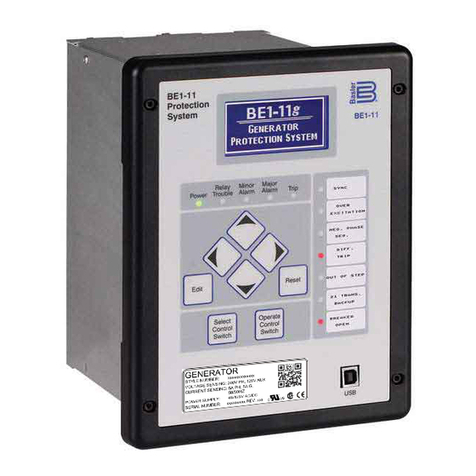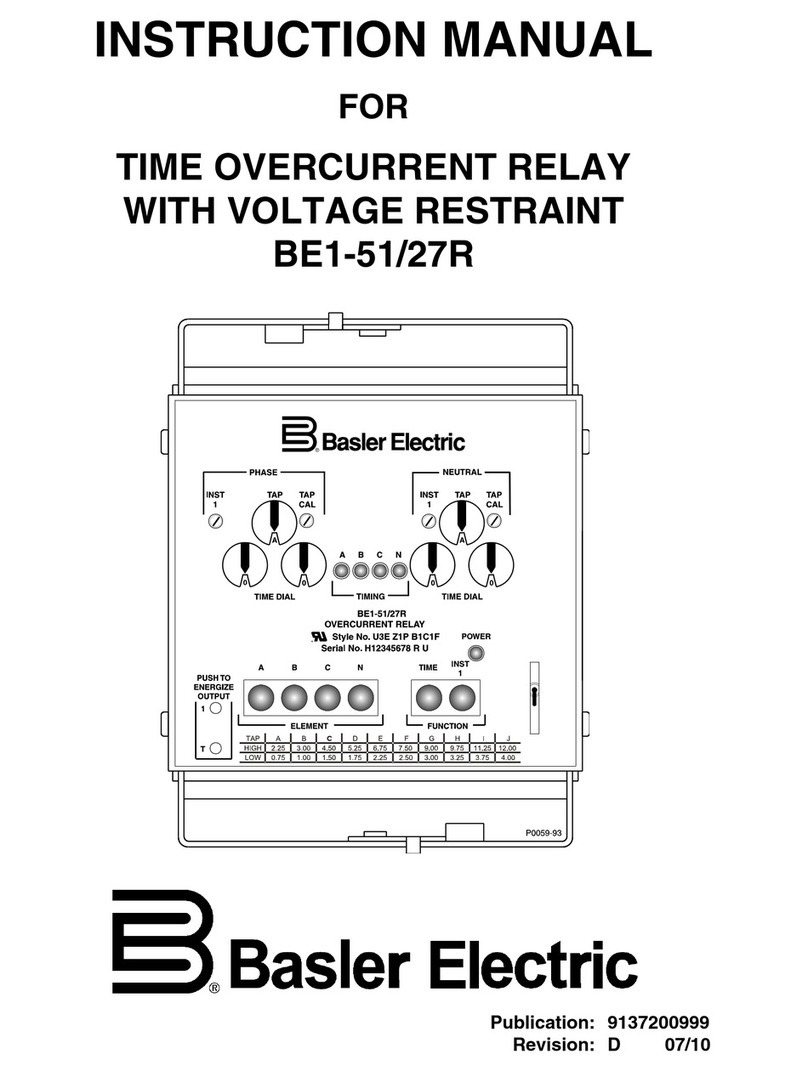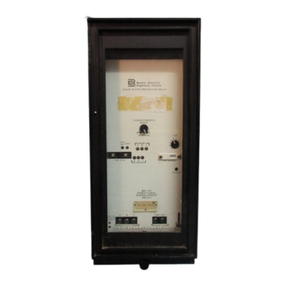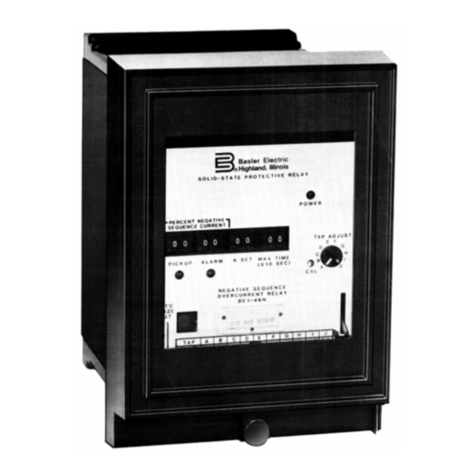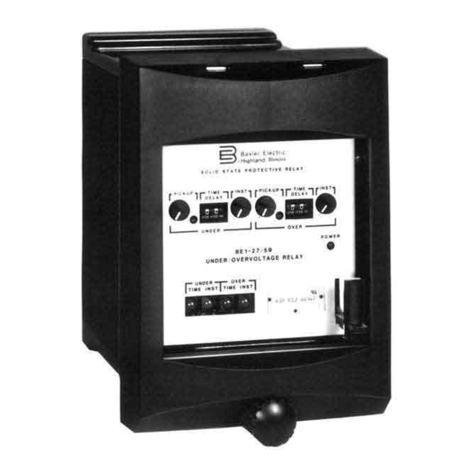
BE1-50/51M General Information 1-1
SECTION 1 • GENERAL INFORMATION
DESCRIPTION
BE1-50/51M Overcurrent Relays are microprocessor based, non-directional phase or ground relays that
monitor the magnitude of a single phaseac current to provide accurate instantaneous and time overcurrent
protection for 50 hertz or 60 hertz power systems. Models are available with fifteen popular time
characteristics and a wide range of pickup settings.
APPLICATION
The wide range of pickup settings and front panel selectable time characteristics permit applications
involving coordination with fuses, reclosers, cold load pickup, motor starting, and fixed time requirements.
Integratingresetfunctionsare availabletosimulatethedisk resetofelectromechanicalrelays. BE1-50/51M
Overcurrent Relays have the following standard features.
&
Independent time and instantaneous elements.
&
A secure method to manually trip the breaker at the relay front panel.
&
Direct reading front panel controls.
&
Minimum pickup setting for safety during installation.
&
Time characteristics extend to a pickup multiple of 40.
&
Rugged draw-out construction with steel case.
&
Magnetic latching targets retain indication without power.
&
Built-in accuracy eliminates internal adjustments.
&
Minimum transient overreach.
&
Field selectable characteristic curve selection.
&
Field selectable instantaneous or integrating reset.
&
Field selectable 50 or 60 hertz operation.
&
Fieldselectablefixedinstantaneousdelay (0.0,0.1,0.2,or 0.3second on 100seriesrelays
and 0.0 or 0.1 second on 200 series relays.).
Individual models are available for 1 ampere and 5 amperes sensing input currents. BE1-50/51M
Overcurrent Relays (both horizontal and vertical mounts) must be removed from the case and installed on
a test bench for testing. Shorting contacts are provided for all current inputs when the relay chassis is
removed from the relay case. Figure 1-1 shows the front panel of the BE1-50/51M Overcurrent Relay, in
a C1, horizontal mount case. Figure 1-2 shows the front panel of the BE1-50/51M Overcurrent Relay, in a
C1, vertical mount case. Internally (circuit wise), all relay models are the same and use the same circuit
assemblies.
BE1-50/51M Overcurrent Relays have many advantages over other overcurrent relays. The five primary
advantages are:
&
Time characteristics are defined by equations and graphs.
&
Field selectable time characteristics.
&
Very low burden.
&
Self powered from the sensed current.
&
Continuous automatic calibration.
Courtesy of NationalSwitchgear.com
